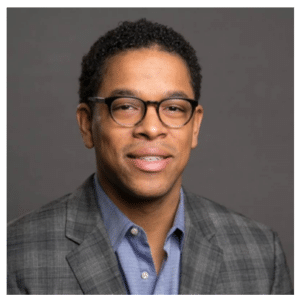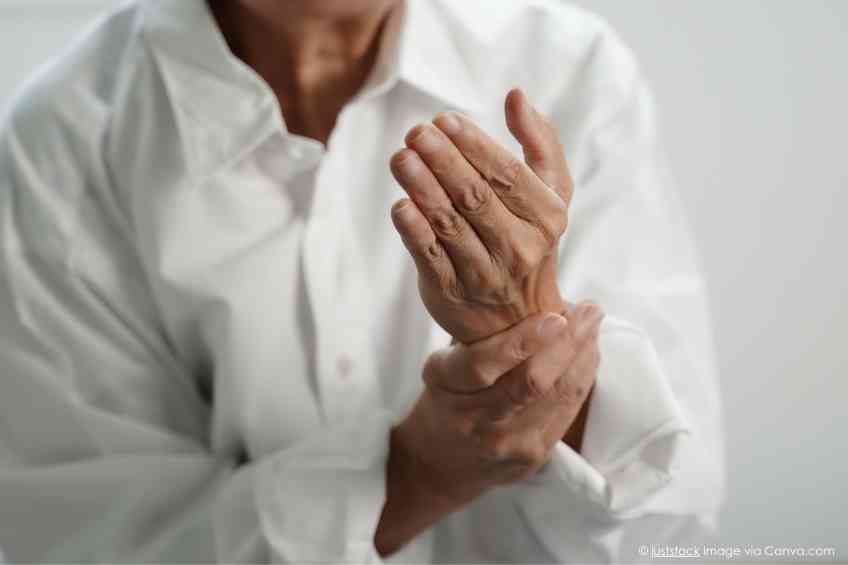Americans undoubtedly are giving themselves a stroke for a variety of reasons. In fact, hundreds of thousands of Americans get hit with one every year—and lots of these people die from the impact or are severely disabled. All of this is the bad news. The good news is that there have been enormous advances in treating stroke victims in recent years, which have lowered related mortality rates and lessened the debilitating consequences of strokes. Much more needs to be done. Thankfully, Dr. William “BJ” Hicks of the American Stroke Association recently spoke with WellWell on how what needs to be changed inside the medical community and among the public at large to put an even tighter lid on this threat. Read on.
What is a stroke and what happens when somebody has a stroke?
Our brain has blood vessels that give blood, oxygen and nutrients to it so that it can function. That blood flow gives oxygen and nutrients to the brain cells. And without that, the brain cells die. A stroke is a sudden phenomenon where the blood flow to the part of the brain is suddenly disrupted. Now, classically, that’s from a blood clot that gets lodged or stuck into a part of a blood vessel in the brain in that area of the brain that typically gives the marching orders of one particular part of the body or one particular task like seeing the world in one area or speaking. Another type of stroke is if a blood vessel bursts. But it can cause those same types of problems, and often it’s a bit more worrisome.
How many people suffer from strokes in the US or worldwide every year?
About 800,000 people every year suffer a stroke. We are keeping more patients alive from stroke. When I first started in the neurological field, stroke was the third leading cause of death in this country. It’s now the 5th, so that’s an improvement statistic.
Are the number of strokes rising or are we just better able to treat them?
We started to work on lowering the number of those who suffer strokes and pass away from strokes. But it’s been a bit of a fight recently because we’ve seen an uptick in the number of strokes that people are surviving from, but they’re occurring at younger ages. We have unfortunately developed unhealthy behaviors as our society has evolved in certain ways. We’re no longer getting the free exercise that occurs with more healthy living activities like manual labor and more time outside. We live a more sedentary lifestyle. So, we have to do a lot more to keep our bodies and our minds active. And those are the healthy behaviors that we have to work a lot harder towards where historically we were just able to do that through natural living. And of course, the other thing is diet and other sorts of lifestyle choices that are at our proverbial fingertips.
Are there other causes of strokes?
There are two major things that the American society at large should be focused on. The first thing you should do is stop smoking. You should never pick up the habit. And if there is a habit, there should be a strong focus to try to rectify this. Far too often I have patients that say I thought it was a cancer thing. And I didn’t know it was a stroke thing either. We did great work to let people understand the risks of smoking and they automatically tie it to cancer. But heart disease and stroke risk meteorically rise with the use of cigarettes. Our society has lowered that risk tremendously, which is great, but two areas are still being hit hard with smoking that’s our rural communities and our underserved and underappreciated urban pockets where often the most harmful types of cigarettes, which are menthol cigarettes, are targeted to those black and brown populations in urban centers. And so that’s the big modifiable risk factor, is cutting out smoking.
The second thing is blood pressure. Know your numbers for blood pressure. We call blood pressure the silent killer. Because you can walk the earth, you can be living your best life, thinking that everything is perfectly fine. But, if you don’t know your numbers, it’s not going to hurt you until it hurts you with a Stroke. And so elevated blood pressure, high blood pressure, a blood pressure greater than your top number, the systolic blood pressure greater than 130. That’s hypertension. That’s high blood pressure. Those numbers have lowered recently as far as our guidelines. But that’s because we know that every time someone lives a year and lives several years with high blood pressure, that puts them at a major risk of non-bleeding or ischemic strokes where a blood clot can occur. And people can walk the earth with blood pressure in that top number in the 180s, 200s to 220s and think everything is fine until it isn’t. So those are the two major risk factors that we say are modifiable.
Why is smoking bad for us when it comes to strokes?
From the cerebral vascular and the cardiovascular side of things, it works to nick away at the smooth flow that a blood vessel provides. It kind of muddies up the water so to speak. It accelerates atherosclerotic disease, which is the hardening of the arteries. So, folks my age and sometimes younger end up with a blocked or a very narrowed carotid artery, which is a major blood vessel that feeds blood flow to the majority of one side of the brain. We have all sorts of blood vessels feeding blood flow into our brains along with that carotid artery. There is a surgical technique called endovascular where we put stents into that type of blood vessel. But for the blood vessels in the brain, we don’t always have access to it and it is very difficult to stent open or to do a surgical procedure on narrow blood vessels up there. If a small blood vessel is hardened by atherosclerotic disease, oftentimes it’s impossible to walk that back. We have medications to try to slow the process or to smooth the blood flow through that tightened artery, but we don’t often have a surgical cure. For this issue, lifestyle modification is necessary because the medications can only do so much. it’s up to us to make sure that doesn’t happen in the first place.
Does stress significantly contribute to the risk of experiencing a stroke?
Historically, physicians would downplay that, but we’re learning a little bit more about how a life of chronic stress can contribute to a stroke. And that can be from internalizing too much, then what ends up happening is we’re not getting good sleep. And if we are always in a stressful state, our cortisol level is up. We’re starting to notice that heightened levels of cortisol are causing elevations in your blood pressure and your blood glucose level. It’s disrupting your sleep. You are often self-medicating with things. Not only the cigarettes that we talked about but other unsavory types of illicit drugs or alcohol in excess to try to medicate in other ways. We’re not allowing ourselves to engage in healthy behaviors because we may not think we have time or we’re ruminating over something else or there might be a fear level associated with that. We’re not dealing with our underlying issues with depression and anxiety and maybe we are carrying that with us for far too long and we’re not addressing that appropriately. And all of these things will increase your risk of stroke. So, it’s easy to just say stress, but it’s all of these things in concert that increase that risk.
What are the dangers of strokes?
It is the number one cause of serious long-term disability in the United States. When you think of what the brain does, there are parts of the brain that allow us to breathe and allow us to stay awake. And so, if that’s disrupted because of a stroke, we know that life will not be sustainable without the use of artificial means. That is a crippling way to be disabled. Our language centers can be affected, so our ability to communicate what we’re doing right now in this podcast. If there was a notable stroke that was to occur, we would not be able to do that. Either the language center that allows us to understand what’s being said to us and answer appropriately or the ability to get those words out in a way that would be permanently disabled. That’s what certain strokes can do.
Your vision also can be affected where one side of your world you’re unable to see the world very well. Your ability to move your arm or move your leg or both can be permanently affected. Your ability to sense or feel one side of your body could be permanently affected. Your coordination or your ability to handle the right side of your arm or your leg, and therefore your balance or your ability to kind of dress yourself. All of these things can be affected and several other things. and often some of those or all of those in combination is what a stroke could do to someone. So that’s why it’s something serious and the other thing there are things that are quite obvious that someone’s impaired because of those things that I mentioned, but there are other things that cannot be noticed or cannot be seen by the naked eye. Where small elements of what I just mentioned are occurring and so it’s making it hard for someone to function throughout the day and it’s a real struggle to do certain things that we take for granted. And yet someone’s employer or someone’s loved one may not get what the big deal is and say I don’t understand it. You should be able to do the job because a lot of it is a cognitive element. The cognitive functioning could be a little bit impaired. Their ability to process the world is impaired, and so there are a lot of people in silence, especially with depression and anxiety that may come with this including the fear and the sense of entrapment after a stroke. All of these things are often difficult for the naked eye to see.
So, a lot of people are suffering in silence even after somebody will say, wow, you made a great recovery from that, that I’ve been guilty of this as a stroke neurologist. We all have. The doctor says, wow, you made a great recovery. You should have seen how you were three months ago. And yes, that may be true, but I’m not back to myself, and in fact, that last 10 percent to get back to my 100 percent is a big gap and it’s a gap that could lead somebody Just far enough to where they can no longer be the productive member of society that they used to be and that’s something that people don’t often understand from strokes.
There are different degrees of strokes. Are you seeing people running around who’ve had strokes who don’t realize it because it was a small stroke?
Certainly. There are people who may have had a slight change in their standard operating procedure, they suddenly had numbness or they’re off balance. They tried to push through it or maybe they went to the doctor, or maybe they just stayed out of work for a week and then the symptoms went away. And they kept moving on and then they become my patient when they’re later in life. And we might have seen old strokes on their scan. And the families are mortified when we say that there’s evidence that there’s been prior strokes in the past. So yes, a lot of people can suffer very mild or even silent strokes. We like to say without knowing it. And that’s where the risk factor modification becomes important. But also knowing the signs and symptoms of strokes and knowing that is not something that we walk off, that’s not something that we go to sleep on. It’s not something that we just kind of wish away. And if it goes away, it’s out of sight, out of mind. That is far from the case if someone has stroke-like symptoms. You need to hightail it to the emergency room by calling 911.
What are stroke-like symptoms?
What we want the public to know is the acronym FAST, which lets us know the telltale signs of stroke. There are others, but these are ones that you should know quickly. It should always be in your head. Whenever you’re out in public, whenever you’re with loved ones, or even if you are experiencing this yourself. FAST is an assessment of what’s going on with us. The F is for face. If you suddenly have a facial droop or if you have facial weakness suddenly that’s one aspect of a stroke-like symptom that should warrant further investigation. A is for arm drift. If you suddenly can’t lift your arm yourself or if it’s a little subtle drift versus the other side or if it doesn’t feel as strong as before, that’s a sign of a stroke. The same goes for the leg, by the way. S is for speech. If your speech suddenly changes, if suddenly your speech sounds like it’s slurred, like you’ve had three too many at the bar, but you haven’t had a drink or you don’t drink. If you suddenly have slurred speech. If your speech is suddenly incoherent, no one can understand what you’re saying. Or if you really can’t get the words out like you used to. If all of a sudden there’s that sort of pause. If it’s a struggle to get the words out, that’s an emergency. And finally, the T in fast is for time. It’s time to dial 911. It’s not time to dial your doctor’s office. It’s not time to get on the phone and Google symptoms, it’s not time to call a friend or a loved one and certainly not time to take a nap. It’s time to dial 911 and hightail it to the emergency room. Your primary doctor and your relatives will find out after that because minutes matter.
When it comes to strokes, every second we’re not in the emergency room getting assessed or being evaluated in a mobile stroke treatment unit, the potential for irreversible damage to the brain increases. For instance, in certain communities, we have ambulances that can come to someone’s driveway or their bedside and provide stroke-like care. This sort of emergency care has been revolutionized over the past several years because of the importance of early, rapid, immediate treatment for stroke, and so the FAST acronym can help someone understand that I need to dial 911 so I can get that type of cutting-edge care as soon as humanly possible.
What can we do for strokes now in terms of treatment? Can we reverse the impacts of strokes that we may not have been able to do 10, 15 or 20 years ago?
There was a bit of a revolution that occurred in the mid-1990s with a thrombolytic medication or a clot-busting drug and that drug was called TPA. Since that time, we’ve also developed another medication we use called TNK. The gist is the same and it is a clot-busting drug that we can give through somebody’s IV if they’re having non-bleeding stroke-like symptoms. This medication is extremely time-dependent. We have a window of time when we can safely give the medicine, but the magic is getting it within 60 to 90 minutes. That’s really where the magic happens, where we can have someone with severe stroke-like symptoms get this medication rapidly and their symptoms rapidly improve. So, there is a time frame and it’s classically four and a half hours. It’s three hours for some select individuals. But we love to really push the envelope and get it to somebody rapidly because the quicker we give it, the better chance they have a full recovery or at least an excellent outcome.
Within the past 10 years, we’ve noticed a meteoric rise in treating large blood clots. We’ve been working on this for several years and there are several centers like one where I work, where we’ve been doing this for even longer. It’s an approach where we can go through with catheter-based therapies and we can get to the blood clot through the blood vessel, find that area and remove or extract the blood clot that’s causing the problem. We have seen a real revolution in that care and we’ve been able to reverse major stroke symptoms because large blood clots cause the major stroke symptoms, we are able to now remove those clots and restore blood flow at a very high clip with a very high likelihood of an excellent outcome. Also, we are starting to push that time window where treatment is an option further and further out. We can do it 24 hours in some cases even when we start to see some stroke damage already on the brain scan. We can still safely provide this care and provide a much better outcome than if we did not do anything at all. So that type of care for the non-bleeding or ischemic strokes is starting to push the envelope and reach more lives.
Now what about the bleeding strokes? Those make up about 10 to 15 percent of all strokes. They are often the most ominous. They’re the types of strokes that often cause the most disability and even death. We don’t have a magic bullet like we do with the ischemic stroke. But we are working hard on different therapies that we could provide. We have recently found that there’s a surgical approach for bleeds that happen in the outer edge of the brain and we’re very excited about that. The treatment option is for those types of bleeds that are a little bit deeper into the brain that often result from high blood pressure. There’s a study called The Fastest Trial that we’re looking at Factor 7. This is a way to try to reuse a blood clotting factor to re-clot or stop the bleeding. We’re still in the investigational stages to see if early treatment of this Factor 7 within two hours of somebody’s symptoms could be effective but timing again is mission critical for these hemorrhagic strokes.
Is there enough research and dollars put into stroke prevention and treatment? Is it a matter of time or dollars?
Considering the utter lack of available funding, the research that has been done is nothing short of historic and commendable. I can’t stress that enough, despite it being the fifth leading cause of death and the number one cause of disability. And despite the fact that during my time in neurology, we have seen it go from third to fifth. That may not sound like a big drop, but there are not a lot of diseases where we’ve seen such movement. And just imagine what we can do with even more movement that often comes with major research changes and opportunities. and when you look at what we can do based on the small amount of funding in comparison to some other diseases that I won’t name; it is night and day. So yes, more research is needed. And I would add that we have been really good about front-end treatment for stroke. We have yet to find viable options for what happens if someone has had a major stroke and what we can do to help their stroke recovery. That is what I am desperate to see and what I can’t wait to be a part of in the course of my career because that’s really where the leading cause of disability lies. We need therapies, we need innovation to help rectify that issue. So, someone who was disabled all of a sudden can return to work, can return to being a functional member of society and can return to engaging with their friends and families. That’s what I can’t wait to see. And that’s where the funding needs to be on point.
Why do you think there hasn’t been as much funding? Is there some reason we’re not paying enough attention to strokes?
We all need to be advocates. I think that anything that needs action requires a grassroots effort towards it. The American Heart Association has done great work to become an advocate and to cultivate collective action to help rectify this issue to help drive research and help show what can be done with research dollars in spaces in and around stroke and heart vascular disease. Government funding for research for health care is always a struggle and as a collective community, we need to hold our Congress women and men accountable.
You mentioned that you see strokes affecting people at a younger age. Why is that? Is that a diet issue? Is it something else?
It is diet, it is a sedentary lifestyle, it is lack of access to primary care, not understanding your blood pressure numbers and it’s the feeling that it’s something that’s not necessary until later in life. And, we just haven’t created an environment where we continue follow-ups in the healthcare setting. Once you reach your 20s and then your 30s and then your 40s, it tends to be something that we have to do once we have discerned something like stroking somebody as opposed to we have to have a preventative lens, we have to make sure that people in their 20s and 30s develop the habit of routine checkups.
What are the big misconceptions out there and why are they dangerous?
A lot of people have a defeatist attitude or kind of just a belief that there’s not much that can be done. That is the old way. Stroke is preventable, stroke is treatable. The quicker we get somebody to a stroke center that can provide this level of care, the better off patients are. Patients have a much higher chance and opportunity to walk out of the hospital or to be back to work in a timely fashion. But the key is to know what is going on. So, knowing that FAST acronym—face, arm, speech and time—and being able to act on that. So, it doesn’t do anyone any good if you can identify a stroke but you’re not going to call 911 or maybe you wait for a ride or you drive yourself. These things slow down the process, so it’s not only being able to know what to do, it’s knowing to act fast to dial 911 to get the care that you deserve as quickly as humanly possible. And then again, there are ways to prevent strokes. It provides front-end care. That is much better than any of the things that a stroke neurologist must do to work somebody up and to make sure that they can’t have a second one. It’s much better to work hard and to naturally change someone’s life to make sure that we’re engaging in healthy behaviors and eating in a way where we can naturally, precipitously drop the risk of stroke as a disease.
About William “BJ” Hicks, MD
William “BJ” Hicks, MD, is a national volunteer expert with the American Stroke Association and also Vice President at OhioHealth Neuroscience. He is a vascular neurologist who specializes in conditions of the cerebrovascular system — like ischemic and hemorrhagic strokes. His main areas of interest include rapid access to acute stroke rescue therapies and clinical trials.
Please visit the American Stroke Association and OhioHealth to learn more.













